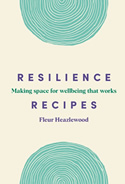
Promoting open and transparent communication is one of the strategies that help build workplace resilience and lead to better management of an organisation’s challenging times. Photo: File.
While the pandemic may have subsided, the evolving global situation, both natural and man-made, is continuing to throw up challenges. Dan Schawbel has advice on how to meet them.
In the ever-evolving landscape of the modern workplace, building resilience has become a cornerstone of success, especially during difficult and uncertain times.
Resilience empowers individuals and teams to navigate challenges, adapt to change, and maintain their wellbeing while continuing to perform at their best.
A study in the Journal of Work-Applied Management suggests that individuals with higher levels of resilience are better equipped to manage career challenges and transitions.
Workplace resilience refers to an individual’s or a team’s capacity to effectively adapt, recover and thrive in the face of challenges, uncertainties and adverse circumstances.
It involves maintaining mental and emotional wellbeing, staying productive and bouncing back from setbacks, while navigating the demands and changes inherent to modern workplaces.
Being resilient is particularly crucial when facing challenges as significant and complex as the COVID-19 pandemic or managing through a natural disaster.
Resilience helps individuals and communities navigate through adversity, maintain wellbeing, and adapt to new circumstances.
The uncertainty brought by the COVID-19 pandemic regarding health, jobs and overall stability caused significant stress.
Resilience helps individuals manage anxiety and fear, enabling them to focus on what they can control rather than becoming overwhelmed by what is uncertain.
I am delving into some of the strategies and approaches that foster workplace resilience, enabling organisations and their employees to not only survive but thrive.
Promote open and transparent communication: In times of uncertainty, speculation can exacerbate stress and fear among employees.
Leaders must cultivate an environment where information flows freely.
Regular updates about changes, challenges and the organisation’s strategies instil a sense of trust and keep employees informed.
Cultivate a positive work environment: Encouraging camaraderie, appreciation, and support among colleagues can significantly enhance resilience.
Recognising and celebrating achievements, both small and large, fosters a sense of accomplishment and motivation.
When employees feel valued and connected, they are more likely to weather challenges together, emerging stronger on the other side.
Develop flexibility as a core competency: In the face of uncertainty, the ability to adapt quickly becomes invaluable.
Resilience necessitates developing a flexible mindset that sees change as an opportunity for growth rather than a threat.
Encourage employees to embrace change, innovate and seek creative solutions.
By recognising change as a constant, organisations can position themselves to proactively navigate shifts in the business landscape.
Set clear goals and priorities: Clearly articulate organisational objectives and individual responsibilities.
When everyone knows what they’re working towards, they can align their efforts accordingly, even when circumstances are uncertain.
Invest in skill development: Continuous learning enhances employees’ confidence and competence, making them better equipped to tackle challenges.
Provide opportunities for training, workshops and online courses that are relevant to both current roles and potential future demands.
The acquisition of new skills not only bolsters individual resilience, it also enhances the organisation’s overall adaptability.
Prioritise work-life balance: In times of uncertainty, the boundary between work and personal life can blur, leading to burnout.
Emphasise the importance of work-life balance and encourage employees to disconnect during non-working hours.
This recharges individuals, allowing them to approach challenges with renewed vigour and a clearer perspective.
Join support networks: Strong social support networks within the workplace foster a sense of belonging and mutual assistance.
Encourage team bonding activities, collaboration and regular check-ins.
In challenging times, knowing that colleagues have your back can provide the emotional buffer necessary to navigate uncertainty.
Champion self-care practices: Promote regular exercise, healthy eating, mindfulness, and relaxation techniques.
These practices bolster mental and emotional health, enabling employees to manage stress and uncertainty more effectively.
Provide resources for stress management: Offer resources such as stress management workshops, counselling services and mental health support.
Encouraging employees to seek help when needed destigmatises mental health challenges and promotes a resilient workplace culture.
Lead by example: Leaders should embody resilience by remaining composed, adaptable, and empathetic in the face of challenges.
When employees witness leaders demonstrating resilience, it becomes a model for them to follow, fostering a culture of strength and determination.
Resilience is a journey informed by experience. Encourage regular reflection on past challenges and how they were overcome.
This practice builds a reservoir of knowledge and strategies that employees can draw upon when facing new difficulties.
The cultivation of workplace resilience during difficult and uncertain times is a multifaceted endeavour that requires a holistic approach.
By promoting open communication, nurturing a positive environment, developing flexibility, and emphasising skills and wellbeing, organisations can build a culture of resilience that enables them to thrive amid adversity.
Leaders play a pivotal role in setting the tone and example, while employees’ collective efforts to support one another create a strong foundation for success.
With the strategies outlined, workplaces can not only weather storms but emerge from them stronger, more adaptable, and ready to seize new opportunities.
Dan Schawbel is a bestselling author and managing partner of Workplace Intelligence, a research and advisory firm helping HR adapt to trends, drive performance and prepare for the future.
This article is part of his Workplace Intelligence Weekly series.











